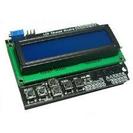
I didn't discover anything new since Arduino and Great Cow Basic already have that feature in their LCD routines but now I have that in the Simple C library. Now I wish PICBASIC PRO 3 had the same capability since that compiler requires the same four data bits in a row that my original SimpleC did.
Anyway, if you want the code you can download it from my elproducts.com download page and then scroll to the link below the LCD Shield picture/description to get the code.

 RSS Feed
RSS Feed
